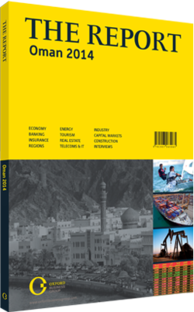OBG talks to Salim bin Nasser Al Aufi, Former CEO, Public Authority for Civil Aviation (PACA)

Interview: Salim bin Nasser Al Aufi
How will the current plans for Muscat International Airport expand its capacity?
SALIM BIN NASSER AL AUFI: The sultanate is currently constructing the new Muscat International Airport, Oman’s largest civil engineering project to date. In terms of traffic, phase one for the new Muscat airport will expand annual traffic capacity to 12m. At the moment, the aim is to capitalise on the existing terminal to complement the new facility. The existing terminal will create an additional capacity of 8m to 9m passengers. However, what hasn’t been decided is what exactly will be the nature of traffic, whether it will be freight or passenger oriented. We are reviewing different options. Currently Muscat International Airport’s annual passenger traffic is approximately 7.5m, and we are estimating 10m passengers by the time the new airport is operational. As the market grows we have four phases planned for Muscat International that will increase the annual capacity to 24m, 36m and 48m passengers.
The new Muscat International Airport will also include a new maintenance, repair and overhaul facility, which will be large enough to accommodate the new Oman Air B787 aircrafts. The finished site will also include a catering kitchen capable of producing up to 300 meals per day and a cargo facility with a total capacity of 260,000 tonnes. A new, state-of-the-art air traffic and meteorology centre is also planned.
What other airports are currently under construction throughout the country?
AL AUFI: Other airport projects include new or expanded facilities at Salalah, Sohar, Duqm and Ras Al Had. In total six airports are being constructed; however, Adam Airport was transferred to the Ministry of Defence and is no longer a civilian airport.
Salalah phase one is designed for a capacity of 2m passengers. The new terminal will be more than enough to accommodate the traffic currently going through Salalah, with the final design allowing for 6m passengers. At the moment there is an increase in traffic to Salalah Airport. A major factor is the announcement that Qatar Airways and Fly Dubai will be flying to Salalah four times per week. We are also looking at expanding the operation by making Salalah Airport a hub that will connect the region to Africa and South-east Asia. Like the Muscat airport, Salalah is set to receive a new air traffic and meteorology centre, as well as a 100,000-tonne cargo facility.
Sohar is designed for 500,000 passengers, and as long as the airport attracts at least 250,000 passengers annually it will be commercially viable. Sohar Airport is also designed to serve the port Sohar, the industrial area as well as the free zones. Duqm Airport is similar in design, and is also created for 500,000 passengers. The unique aspect to Duqm Airport is that it will revolve around cargo traffic. By moving into the new airport we can increase the traffic as well as open it up for potential international traffic, directly targeting the Duqm special economic zone. This brings us to Ras Al Had Airport, which is set to cater purely to the tourism industry. We are partnering with the Ministry of Tourism to build up surrounding infrastructure: entertainment, hotels, resorts, roads, etc. These are necessities to make the area attractive and viable as a tourism destination.
What aviation projects, both in construction and other areas, are likely to come from public-private partnerships (PPPs)?
AL AUFI: We are primarily looking to the private sector to provide aviation services and are conducting a study to better understand the various options. We are seriously considering the introduction of low-cost carriers, whether as a subsidiary of the state carrier, Oman Air, or privately owned. Other possible areas for PPPs include the provision helicopter services and executive aviation, an area where private interest has already been expressed. We are also considering PPPs for cargo operations and other services.
You have reached the limit of premium articles you can view for free.
Choose from the options below to purchase print or digital editions of our Reports. You can also purchase a website subscription giving you unlimited access to all of our Reports online for 12 months.
If you have already purchased this Report or have a website subscription, please login to continue.

